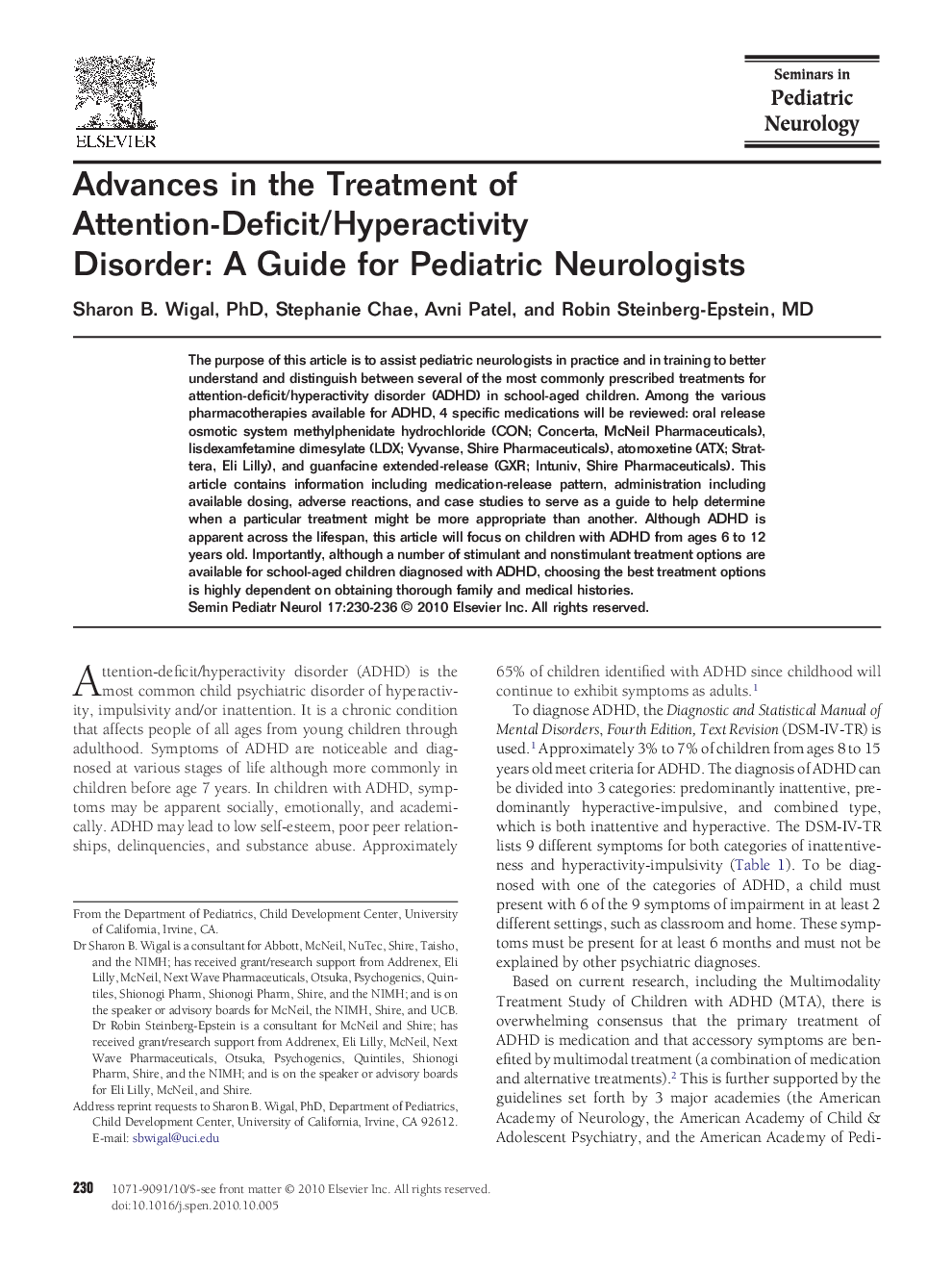| Article ID | Journal | Published Year | Pages | File Type |
|---|---|---|---|---|
| 3091193 | Seminars in Pediatric Neurology | 2010 | 7 Pages |
The purpose of this article is to assist pediatric neurologists in practice and in training to better understand and distinguish between several of the most commonly prescribed treatments for attention-deficit/hyperactivity disorder (ADHD) in school-aged children. Among the various pharmacotherapies available for ADHD, 4 specific medications will be reviewed: oral release osmotic system methylphenidate hydrochloride (CON; Concerta, McNeil Pharmaceuticals), lisdexamfetamine dimesylate (LDX; Vyvanse, Shire Pharmaceuticals), atomoxetine (ATX; Strattera, Eli Lilly), and guanfacine extended-release (GXR; Intuniv, Shire Pharmaceuticals). This article contains information including medication-release pattern, administration including available dosing, adverse reactions, and case studies to serve as a guide to help determine when a particular treatment might be more appropriate than another. Although ADHD is apparent across the lifespan, this article will focus on children with ADHD from ages 6 to 12 years old. Importantly, although a number of stimulant and nonstimulant treatment options are available for school-aged children diagnosed with ADHD, choosing the best treatment options is highly dependent on obtaining thorough family and medical histories.
